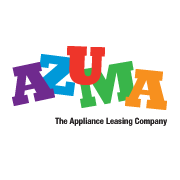The most important place to start making your home healthy is in the kitchen. We all know about healthy foods, but what about what you use to cook with? Here are a few tips on the best materials to use.
 Cleaning and Disinfecting
Cleaning and DisinfectingOf course, clean surfaces are a must when cooking and preparing food. However, soaps and sprays can leave residue on dishes and cutting boards and can seep into your food while you're making it. For washing your dishes, use food-safe and natural soaps. Dr. Bronner's is a good example of a very simple natural soap that is safe for food contact. Borax and baking soda are also great when mixed as a powder for dishwashers. For cutting boards and countertops, spray first with vinegar and then again with hydrogen peroxide and wipe dry for a cleanser that is as effective as bleach at killing germs but completely pet and child safe.
Plastics, Teflon and Aluminum, Oh My!
Each of these materials, when heated, have extremely harmful side effects. That is, microwaving leftovers in a plastic container, making pancakes in a non-stick skillet and using baking powder with aluminum all increase your risk of cancer. The chemicals that each of these materials release when heated are absorbed into your body and stay there. Non-stick surfaces emit gases when heated that are harmful when inhaled and are known to be dangerous and even fatal to pets, especially pet birds. Aluminum is a known neurotoxin that has been linked to Alzheimer's and breast cancer. Bisphenol-A, or BPA, found in plastics is an endocrine disrupting toxin. This means that it mimics hormones naturally found in your body and throws them off balance, which can cause neurological problems, cancer and surprisingly, obesity. BPA is also often found in items like canned beans and shower curtains. Cook your canned foods the old fashioned way to save a little money and a lot of exposure.
 The Right Materials
The Right MaterialsSticking with natural materials is the surest way to eschew any potential chemicals in your food and home, and is also much better for the environment. Reuse spaghetti sauce and pickle jars for storage. Use ceramic or stoneware dishes, and if you microwave your food put a plate or a towel on top to prevent splatter instead of plastic wrap or plastic storage containers. Look for cast iron cookware (the iron that is released into your food from iron skillets is actually akin to taking an iron supplement) and use glass, ceramic or stoneware dishes for baking. Glass cooks evenly and similarly to aluminum, and cast iron is great for baked goods as it heats evenly to create breads that are crusty on the outside and soft on the inside. Non-stick surfaces seem helpful, but it is far better for you to eat a little healthy fat from greasing a pan (use olive, sesame, coconut or safflower oils) than to be exposed to a chemical. And remember to always use new grease when cooking. Reusing and reheating fats can break them down and turn them into hydrogenated and trans fats, which are very bad for your heart and your waistline.
Updating your kitchen and avoiding harmful materials is easy and one of the best steps you can take to a healthy happy home. With these simple basic tips, you'll be well on your way to a simpler and healthier meal time. Until next time!






4x8 corrugated plastic sheets is high transparency, light weight, anti impact and waterproof, which is a kind of excellent packing material, widely used in advertisement printing, industrial packaging, and product protection industries
ReplyDelete4x8 corrugated plastic sheets
Corrugated plastic sheets lowes is mainly used in electronics, packaging, machinery, light industry, postal, food, medicine, pesticides, home appliances, advertising, decorating, stationery, magneto-optical technology, bio- engineering medicine and health and other industries.It is a new type of environmentally friendly packaging materials. corrugated plastic manufacturers
ReplyDelete